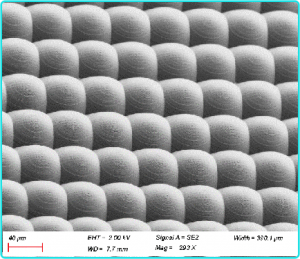
Micro and Nano Processing | MEMS Micro-Energy Device System Preparation
With the improvement of micro-machining technology level and micro-electronics technology level, MEMS system has been developed significantly, limited by the shortcomings of common energy-powered devices such as large size, low energy density and short life, micro-energy devices, which are energy-powered devices, have gradually attracted attention and become an important part of MEMS system. Current research hotspots in the field of micro-energy include: micro zinc-nickel batteries, micro lithium batteries, micro fuel cells, micro solar cells, micro isotope batteries, micro internal combustion engines, vibration-driven micro-energy, and friction generators.
Miniature zinc-nickel battery
Bipolar and Brigham Young University have developed various structures of miniature zinc-nickel batteries using silicon substrate as the substrate, NiOOH and Ni as the positive electrode, Zn as the negative electrode, and KOH as the electrolyte.
Micro lithium battery
The working principle of all-solid-state miniature lithium-ion battery is the same as that of conventional lithium-ion battery, and the battery charging and discharging process is realized by the reversible change of lithium ions between positive and negative materials. The all-solid-state lithium-ion battery has the advantages of high energy density, good integration performance and long cycle time, and is an advantageous miniature energy storage element, which can be divided into two-dimensional structure and three-dimensional structure according to the structure.
Micro Fuel Cell
The fuel cell is an electrochemical device that converts chemical energy directly into electrical energy through a combustion reaction that generates water and carbon dioxide. Fuel cells have high energy density, do not pollute the environment, and can supply electricity for a long time with high fuel compression density. All types of fuel cells are based on the same basic principle and are composed of four basic elements: electrolyte (liquid), cathode, anode, and assembly.
Micro Solar Cells
Solar cells work mainly by using the photovoltaic effect of semiconductor materials, and are a clean, non-polluting renewable energy source with high output voltage, which is suitable for electromechanical systems with sufficient light.
Miniature Isotope Cell
Radioactive isotopes emit particles during the decay process, and the particles have kinetic energy. Isotope batteries can convert the kinetic energy of particles into electrical energy, and are divided into thermal and non-thermal types according to the form of conversion, among which non-thermal isotope batteries are also called nuclear batteries. The characteristics of isotope batteries are: high energy density, small size, high interference resistance, long lifetime, and no additional materials are needed in the process of use, which have broad application prospects in cosmic exploration.
Micro Generator
Micro internal combustion engine
The internal combustion engine is one of the most important power units in today's society, with the advantages of compactness and high power output. The internal combustion engine can be combined with a power generation unit to form a power generation system.
Vibration-driven micro-energy
Vibration energy exists widely in the natural environment and is a clean energy source. Micro-vibrating generators convert environmental vibration energy into electrical energy and provide a stable energy source in electromechanical systems for a long time.
Miniature vibration generators are mainly divided into different structures: electrostatic conversion type, electromagnetic conversion type, and piezoelectric conversion type.
Friction Generator
Based on the principle of frictional power generation, Georgia Tech has designed and demonstrated a nano-frictional generator (TENG) as a highly efficient and stable electromechanical system with two thin films made of polymeric materials.
We offer fastMEMS device / micro and nanostructure processing design services, Feel free to leave a message to inquire.
Related Products
Related Reading
LIGA Plating | Machining metal microstructures, inertial sensing/RF/heat sink parts
LIGA/UV-LIGA Plating | Metal Microstructure RF
Micro and Nano Processing | Photolithography - Optical Lithography
Micro and Nano Processing | Photolithography - Optical Lithography in Nano and Micro Processing Technology
Micro and Nano Processing | MEMS Fine Processing (II)
Micro and Nano Processing | MEMS Fine Processing (II) Microfabrication Technology


